| |

Traditions, folklore, history and more. If it's Irish, it's here. Or will be!
"People will not look forward to posterity who never look backward to their ancestors."
-Edmund Burke




Quotes
Library: Books, Movies, Music
Prints & Photos
Poetry
Jokes


Shops Ireland
Bunús na Gaeilge
(Basic Irish)
Circle of Prayer
Blessings
Did You Know?
Himself/Herself
Write to Us
Readers Write..
Links/Link to Us
Advertise with us
Awards & Testimonials
Submissions Guide

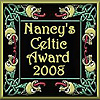
|
|
|
The "Transition" Years
By Gerry Gallagher
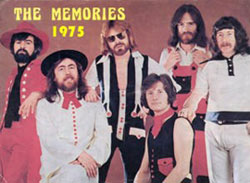 There ought to be a catchy name to define and capture the essence of the period in Irish music that stretched from roughly the early 1970s until the mid 1980s. The time "in between" the demise of the 60's showbands and Ireland's explosion onto the International music scene in the late 80s and early 90s. A lot of articles and books have been written about the hallowed years of the showband era. However, whenever I read that it was all over by the early 1970s, I want to shout out, “it wasn't dead, it was just changing." As a musician who started my professional career in 1974, I played to plenty of packed houses in ballrooms from Clogherhead to Tralee and there was still plenty of life left in the old halls, for at least another few years. In lieu of a catch phrase, I call this period "The Transition Years." There ought to be a catchy name to define and capture the essence of the period in Irish music that stretched from roughly the early 1970s until the mid 1980s. The time "in between" the demise of the 60's showbands and Ireland's explosion onto the International music scene in the late 80s and early 90s. A lot of articles and books have been written about the hallowed years of the showband era. However, whenever I read that it was all over by the early 1970s, I want to shout out, “it wasn't dead, it was just changing." As a musician who started my professional career in 1974, I played to plenty of packed houses in ballrooms from Clogherhead to Tralee and there was still plenty of life left in the old halls, for at least another few years. In lieu of a catch phrase, I call this period "The Transition Years."
The early seventies were an interesting time for the Irish music scene. The original showbands were definitely a dying breed. A few of the big names gave up the ballrooms and focused on cabaret or theatre. More often though, a showband simply morphed into either a pop or country band. Names like the Miami, Sands, and Nevada on the pop side; and the Mainliners, Mighty Avons, and Indians on the country side, kept going with different lineups or by swapping lead singers. They still did well, many continuing to trade on the popularity they had earned during the heady days of the showbands in the 1960s.
The "death" of the showbands did not translate into the end of the ballroom or dancing scene. There was still a lot going on, and the crowds (although smaller than in the 60s) were flocking to the ballrooms in great numbers. Many ballrooms continued doing great business during the seventies and even into the early eighties. It is true that some of the smaller and older ballrooms fell by the wayside and closed up as dancers became more sophisticated and demanded better facilities and more amenities. The flare up of the troubles in the North, followed by the Miami massacre in 1975, also virtually closed the North to most Southern-based bands for several years. However, at the same time, more and more hotels were getting into the dance business and the marquees and major ballrooms were still doing well across the country.
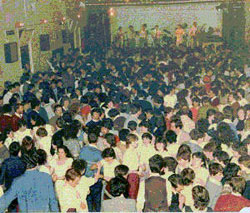 Possibly the greatest development during this period was the “coming of age” of the Irish pop band. In some ways, this was a natural progression from the showband era, but it wasn't really influenced by music in the United States or Britain. In fact, the early seventies were probably best known as the era of singer-songwriters more than anything else. Names like Neil Diamond, Paul Simon, James Taylor, Carly Simon, Elton John, and Billy Joel dominated the charts, along with groups like the Who and the Eagles. In Ireland, though, seven and eight piece pop bands started to spring up across the country and, more importantly, started to make some interesting, and sometimes original, music. Possibly the greatest development during this period was the “coming of age” of the Irish pop band. In some ways, this was a natural progression from the showband era, but it wasn't really influenced by music in the United States or Britain. In fact, the early seventies were probably best known as the era of singer-songwriters more than anything else. Names like Neil Diamond, Paul Simon, James Taylor, Carly Simon, Elton John, and Billy Joel dominated the charts, along with groups like the Who and the Eagles. In Ireland, though, seven and eight piece pop bands started to spring up across the country and, more importantly, started to make some interesting, and sometimes original, music.
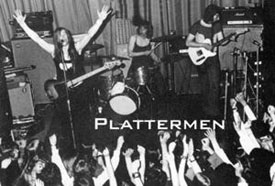 The first major pop bands I remember were Chips, the Plattermen, the Freshmen, and the Memories. The Plattermen had been around in the 60s, but had been a country band until Brian Coll left and Rob Strong stepped out front and they based their new sound on rock, blues and "Blood, Sweat and Tears." The Freshmen had also been around for a many years and had built their reputation on brilliant harmonies supported by complex musical arrangements. On stage, all four bands were as professional as any foreign touring act and punters started to take notice. Soon, other great pop bands like Tweed, the Champions, and the Conquerors followed. These were solid bands that provided a good program of dance music and all the Top 20 hits of the day. More importantly, these pop bands were beginning to experiment with writing their own brand of "pop" music! The first major pop bands I remember were Chips, the Plattermen, the Freshmen, and the Memories. The Plattermen had been around in the 60s, but had been a country band until Brian Coll left and Rob Strong stepped out front and they based their new sound on rock, blues and "Blood, Sweat and Tears." The Freshmen had also been around for a many years and had built their reputation on brilliant harmonies supported by complex musical arrangements. On stage, all four bands were as professional as any foreign touring act and punters started to take notice. Soon, other great pop bands like Tweed, the Champions, and the Conquerors followed. These were solid bands that provided a good program of dance music and all the Top 20 hits of the day. More importantly, these pop bands were beginning to experiment with writing their own brand of "pop" music!
On the other side of the musical spectrum, country bands started dominating the charts and the ballrooms in a big way. Whether this was due to the maturing of the dancers of the sixties, or the growing influence of American country music in Ireland is irrelevant. What is certain is that Irish Country, or “Country n’ Irish” as it would become known, grabbed hold of the ballroom scene with both hands, and would not let go. A flood of country bands, some good, but many of which were terrible, washed over the country and polarized the Irish music scene like never before.
On the one hand, singers like Ray Lynam, Roly Daniels, and Bill Ryan made records that challenged the quality of their American counterparts, even if they were often only copying the originals. On the other hand, singers like Big Tom, Margo, Philomena Begley, and Larry Cunningham became closely identified with the sound of Irish country music. The two styles drove a wedge between punters, who constantly argued over the quality and originality of Ireland’s country artists. Still, these artists created their own sound, often combining American country dance rhythms with Irish traditional instrumentation to provide the perfect vehicle for jiving--the national past time! Whether you loved, or hated, Big Tom and his contemporaries, nobody can argue about the immense popularity of Country n' Irish music, which continues to this day.
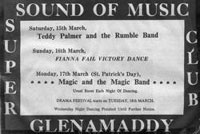 As the seventies gave way to the 80s, several things happened that forever changed the Irish music scene: As the seventies gave way to the 80s, several things happened that forever changed the Irish music scene:
1) Hotels realized that by providing supper, they would be granted an extension of drinking hours until midnight or one in the morning.
2) Disco hit the country with a vengeance, starting in the major cities and quickly spreading to smaller towns.
3) Concerts and folk festivals became an alternative to the dance scene, as Irish folk music established itself as a major draw through the success of bands like Planxty, De Danaan, and the Wolfe Tones.
4) Groups like Bagatelle began to enjoy national success and moved into the ballrooms, displacing some of the smaller pop and country bands from the scene.
As these forces collided, hoteliers realized they didn’t always need high priced live bands to draw a crowd. Punters discovered new ways to enjoy a night out, and a new music scene--then in its infancy--defined Irish rock for the next generation. In the end, the ballroom scene faded away rather quickly. A few ballrooms tried to reinvent themselves by stringing up a disco ball and a few colored lights and called themselves niteclubs. It may have succeeded for a time, but the writing was on the wall.
The big weekend gigs started to falter and bands downsized to save money. Gone were the seven and eight piece bands of the 70s and now bands had five, and maybe six members. At the same time, synthesizers came on the scene which allowed bands to do without brass instruments, as these sounds could be recreated on a “synth.” The larger bands converted or perished, and soon there wasn’t enough to go around. Even more artists went to cabaret and country in an attempt to stay on the road, but little could be done.
Another major factor influenced music during the eighties. Recording finally became something any band could afford. With the introduction of eight track, and then sixteen track recording studios in locations “down the country” in places like Greenfields Studios near Headford, Co. Galway, any band could make a record for a few hundred pounds. Records were no longer a "luxury" afforded only the biggest names in Irish entertainment.
Without the need to make "hit" records (so Dublin-based record companies could recoup their expenses) more bands decided to go it alone and do it themselves. New record labels sprung up on a weekly basis. Bands across the country began writing their own music. Although much of what was being produced was significantly inferior to professionally produced sessions in Dublin, the Irish music scene began to grow and change, and bands no longer had to go abroad to enjoy critical and financial success.
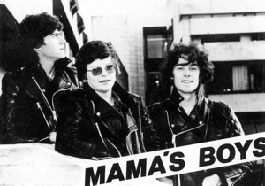 Rock bands like Stepaside, Mama’s Boys, and Autobop, starting make inroads into the dance scene, which was already in a state of flux because of the disco invasion. The previously distinct lines between pop or country vs. rock venues became blurred as more and more rock bands spilled over onto the dance circuit. Of course, U2 charted the way internationally for Irish rock, but they still evolved out of this era in Irish music. Rock bands like Stepaside, Mama’s Boys, and Autobop, starting make inroads into the dance scene, which was already in a state of flux because of the disco invasion. The previously distinct lines between pop or country vs. rock venues became blurred as more and more rock bands spilled over onto the dance circuit. Of course, U2 charted the way internationally for Irish rock, but they still evolved out of this era in Irish music.
The end result of all this change was that by the late 1980s, the Irish dance scene, which had started with the ten to twelve piece orchestras of the likes of Maurice Mulcahy and Mick Delahunty in the 50s; exploded in the 1960s with the heady days of the seven and eight piece showbands of Dickie Rock and Brendan Bowyer; slowed to the six and seven piece pop and country bands of the 1970s; finally reached the end of the line with the four and five piece bands of all musical styles in the 1980s. The bands, like the venues, got smaller. But, in contrast, the music got bigger and bolder. Gone were the automatic rip offs of British and American chart songs, original Irish music was here to stay!
Ireland had finally reached the point where its music could stand on its own two feet. The 1990s and beyond have, of course, become legendary in the annals of Ireland’s rich musical history. Although some of the original pioneers of the showband days have remained active, Irish music has taken the International scene by storm. Led by U2, Irish acts like the Boomtown Rats, Clannad, Stiff Little Fingers, The Saw Doctors, The Cranberries, Westlife, The Corrs, and many more have established Irish pop and rock around the world.
For anyone who feels that “the showbands were crap,” (not nice, Mr. Geldoff) I suggest that all these Irish super groups owe some part of their fame and fortune to the tireless work of the showbands, pop groups, country acts, managers, promoters, musicians and singers that drove the length and breadth of Ireland in cold mini vans and Ford Transits from 1950 through 1990. They may not have all made the best music ever heard; but they all played with a passion for the music and devotion for their fans that should never be forgotten.
It was the new creativity and variety inspired in the twenty year period between 1970 and 1990 I call "The Transition Years," that laid the groundwork for the highly original and unique sound that is today’s Irish pop and rock music. Learn more about the bands that lead the charge at http://www.irish-showbands.com
© 2005 GMS Productions
Resources: Reprinted with the kind permission of the author.
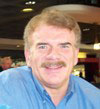 Author's Bio: Author's Bio:
Originally from County Mayo, Gerry played in bands from 1973 through 1983 with bands like the Magic Band, the Fairways, and Pat Ely and the Rocky Tops. In 1978, he and wife Kim formed the Kim Newport Band, based in Sligo. After releasing six singles and appearing on RTE ten times, Gerry and Kim headed for the United States in 1983. After earning his MBA in Marketing, Gerry spent the next fifteen years working in the corporate world until forming GMS Productions in 2003. He started the website Irish Show Bands to pay tribute to the thousands of musicians that played the ballrooms and dance halls of Ireland between 1950 and 1990.
|
|
Thu, Apr 4, 2024
 Ilnacullen, Co. Cork - an Island Garden Ilnacullen, Co. Cork - an Island Garden
Located in the sheltered harbour of Glengarriff in Bantry Bay. Ilnacullin, which means island of holly, is a small island known to horticulturists and lovers of trees and shrubs all around the world as an island garden of rare beauty.
The vivid colours of Rhododendrons and Azaleas reach their peak during May and June, whilst the hundreds of cultivars of climbing plants, herbaceous perennials and choice shrubs dominate the midsummer period from June to August.
Because of its sheltered situation and the warming oceanic influence of the Gulf Stream, the climate is favourable to the growth of ornamental plants from many parts of the world.
Even for those who aren’t particularly interested in gardens, there are many other scenic views, especially in the surrounding waters where seals frequent the rocks on the southern shore.
The cover photo on Bridget's book The Traditional Irish Wedding shows a wrought iron garden gate on Ilnaculen. I took that photo. To see it, go to the home page. It's part of the opening paragraph Failte.
—Russ
Resource: Copy and Image - Cork Guide
Click for More Culture Corner.
Altan is a beautiful example of TRUE Celtic folk music! From the fast, up-beat reels, to Mairead's beautifully sung lullabies, The Best of Altan is sure to keep your spirit soaring, and your feet dancing!
Click for Best of Altan
|
|
|




 Ilnacullen, Co. Cork - an Island Garden
Ilnacullen, Co. Cork - an Island Garden